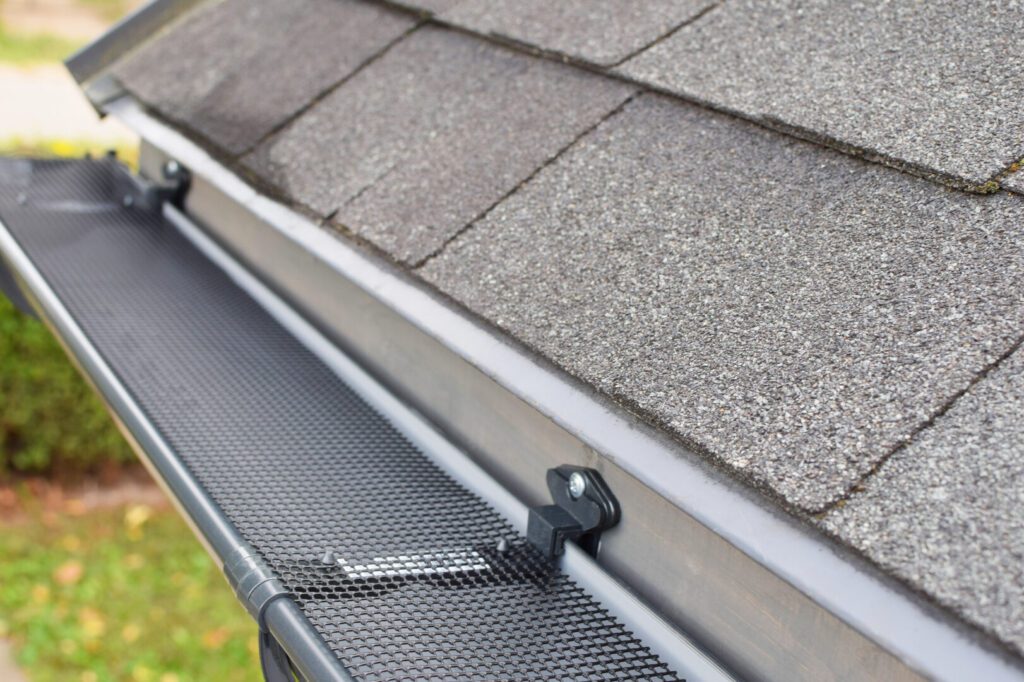How To Choose The Right Gutter Guard?
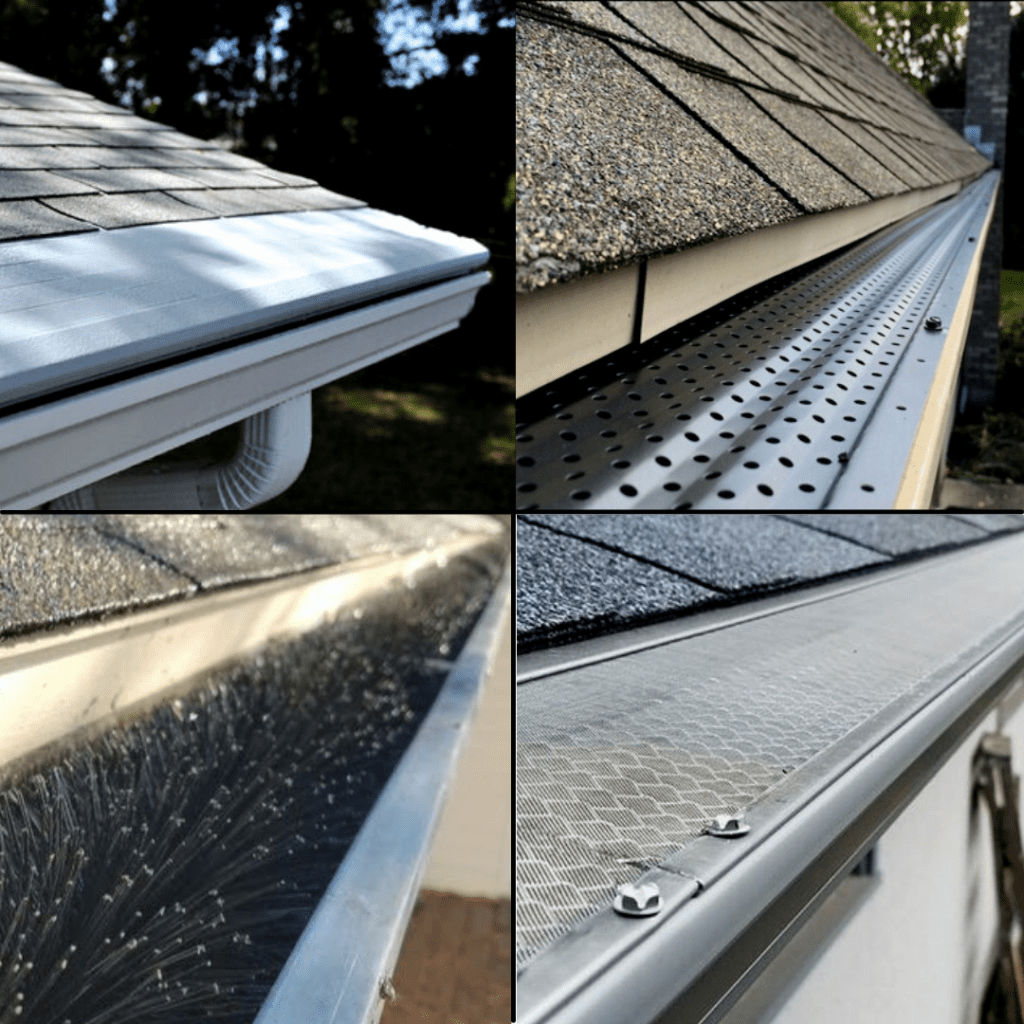
Gutter guards can prevent many headaches for homeowners. If you’ve ever spent time cleaning out leaves, twigs, and other debris from your rain gutters, you know the hassle it brings.
Proper gutter protection helps avoid water damage to your home.
There are six main types of gutter guards: micro-mesh, mesh, screen, reverse-curve/surface tension, brush, and foam. Each has unique features suitable for various needs.
In this article, you’ll learn about the different types of gutter guards available today and discover key factors to consider when choosing the right one for your home. Read on to skip frequent maintenance hassles!
Key Takeaways
- Gutter guard types include micro-mesh, foam, brush, reverse curve/surface tension, and screen guards. Each offers unique benefits and suits different needs.
- Factors to consider when choosing gutter guards are material (like aluminum or stainless steel), size for proper fit, ground visibility, and installation type (professional vs. DIY).
- Micro-mesh gutter guards block tiny debris effectively but may require professional installation; foam guards are budget-friendly but need regular upkeep.
- Professional installation guarantees expertise and efficiency, especially for multi-story homes; DIY is a cost-effective method suitable for one-story houses with appropriate tools.
- Gutter guards reduce maintenance by blocking debris and improving water flow through the gutters, preventing clogs that could lead to water damage in foundations or basements.
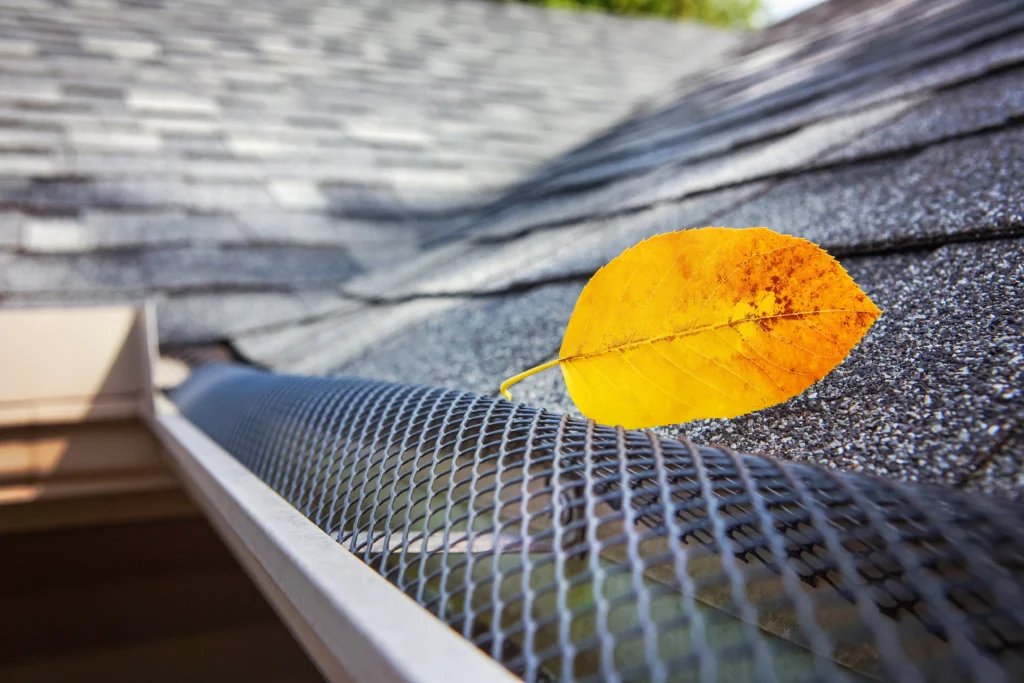
Understanding Gutter Guards
Gutter guards keep leaves and debris out of your gutters. They help protect your home from water damage.
What is a Gutter Guard?
A gutter guard is a protective cover for gutters that prevents leaves, twigs, and other debris from clogging them. It also helps direct rainwater smoothly through the guttering system without blockages.
LeafGuard’s seamless design integrates the gutter and the guard to prevent clogs efficiently.
Popular types of gutter guards include micro-mesh, foam, brush, reverse curve/surface tension, and screen guards. These options ensure clean gutters and effectively reduce maintenance efforts.
Importance of Gutter Guards for Home Protection
Gutter guards prevent clogging and keep gutters flowing freely, especially for homes with large trees. Keeping out debris like leaves and twigs reduces the need for frequent gutter cleaning.
With fewer blockages, water flows properly through the rain-gutter system, protecting your roof and foundation from damage.
Gutter guards help with ice dams by providing a path for melting snow and ice. High-quality options can cost up to $30 per foot when installed professionally but offer long-term protection against problems like foundation damage. Even with these guards to ensure optimal performance, regular inspection of gutters remains necessary.
Types of Gutter Guards
Gutter guards come in various types to suit different needs. Each type offers unique benefits and features for your home.
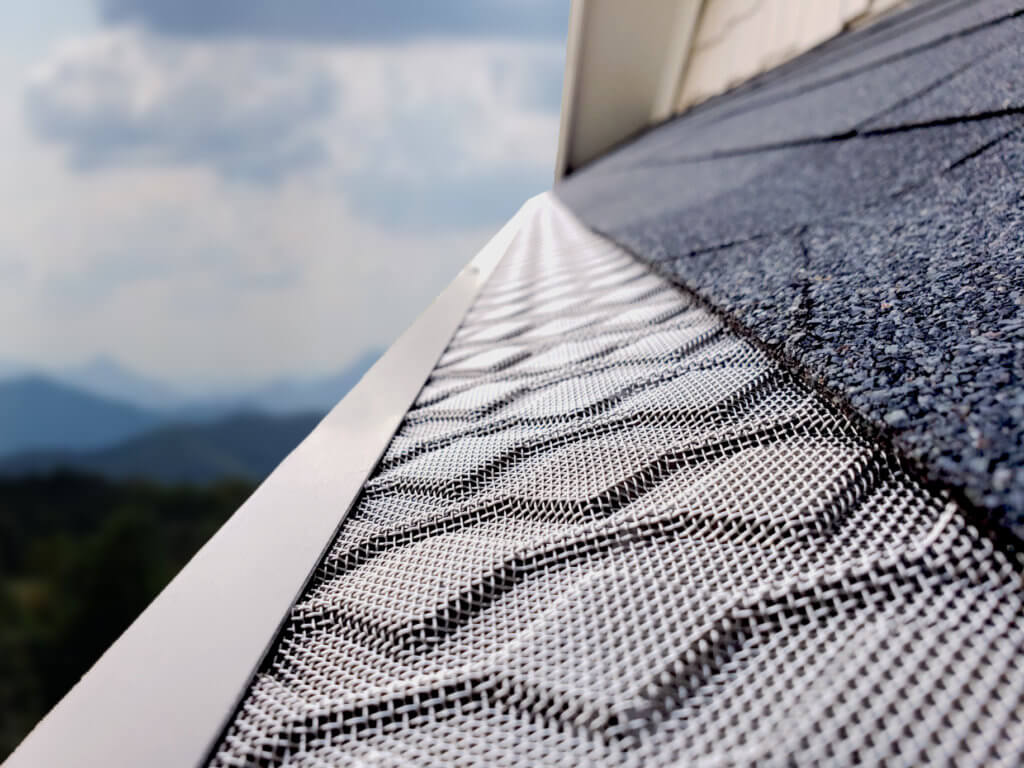
Micro-Mesh Gutter Guards
Micro-mesh gutter guards have tiny holes that block small debris while allowing water to pass. They are highly effective for keeping out leaves and twigs. These guards work well in areas with snow and ice but often need professional installation.
Companies like LeafFilter offer a three-piece system using surgical-grade stainless steel micro-mesh, providing excellent durability.
Perforated aluminum gutter guards may absorb water better than LeafFilter, but they are more expensive. Gutter Rx offers similar performance levels to micro mesh at about half the price, making them affordable.
Their rising popularity over the past decade showcases their reliability and efficiency in home maintenance.
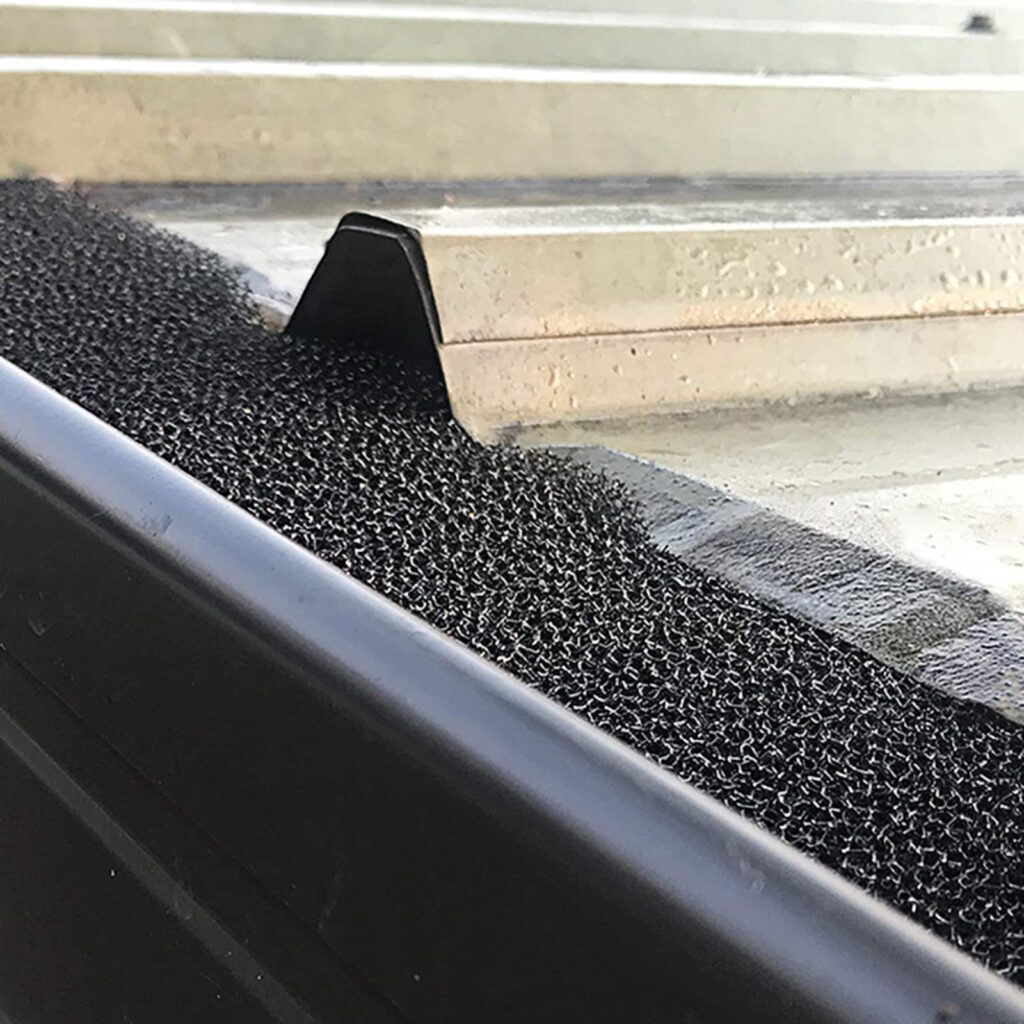
Foam Gutter Guards
Foam gutter guards are a popular choice for homeowners looking for an affordable solution. They are easy to install, simply sliding into place within the gutters. These guards act like sponges, blocking large debris and allowing water flow.
However, foam gutter guards have drawbacks. In areas with high rainfall, they can mold quickly and deteriorate over time. This means they may need yearly cleaning or even replacement.
While inexpensive at first, the cost of maintenance can add up.
Foam gutter guards are a budget-friendly option but require regular upkeep, says a home improvement expert from Gutter Guards America.
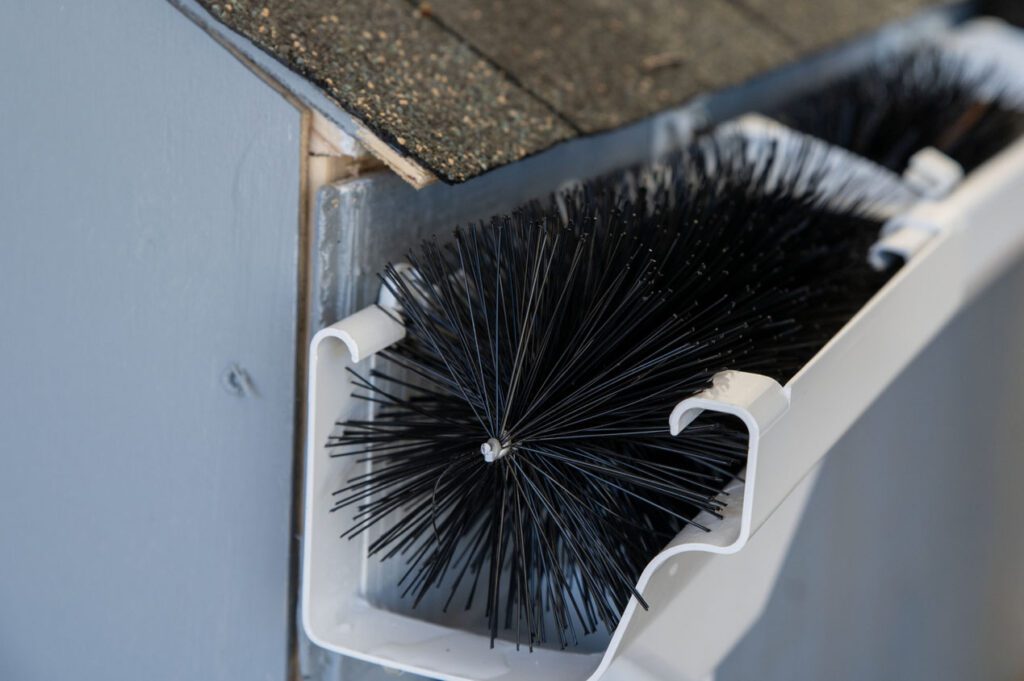
Brush Gutter Guards
Brush gutter guards are inexpensive and block large debris. They fit inside gutters like a giant pipe cleaner. Copper gutter versions are also available for homes with copper rooftops.
Brush guards trap debris, which can lead to clogs, making them hard to clean and maintain. Due to trapped leaves and twigs, frequent cleaning is required. Harsh sunlight can shorten their lifespan.
The Better Business Bureau suggests checking these often for wear and tear.
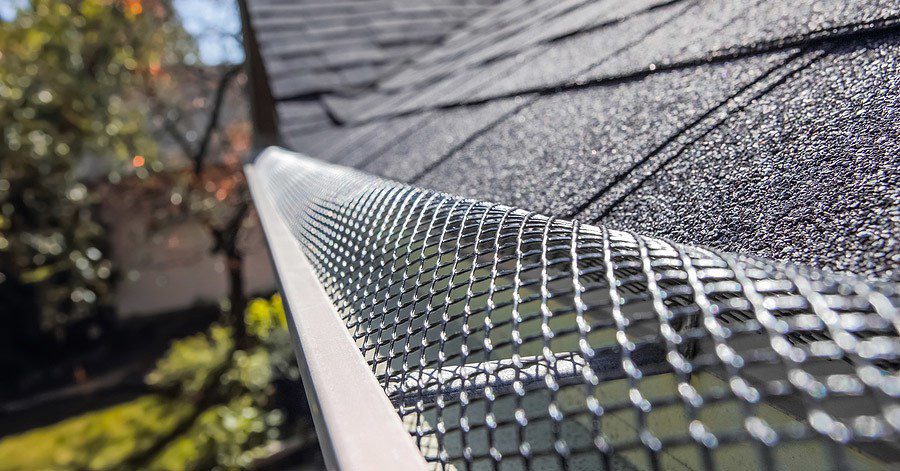
Reverse Curve/Surface Tension Gutter Guards
Reverse-curve gutter guards let water flow around them while keeping debris out. Professional installation is suggested to avoid roof damage. These guards are often visible from the ground, affecting home aesthetics.
They work well in heavy downpours but may need to be adjusted for local climate conditions. Choosing corrosion-resistant materials like powder-coated steel or alloys ensures durability.
Proper size and fit are crucial to prevent leaks and clogs.
Screen Gutter Guards
Screen gutter guards are available in aluminum, copper, steel, and vinyl/PVC. These guards have large holes that keep leaves and debris out while allowing water flow.
They fit most gutters and can be installed using tools like tin snips and glue.
These guards work well in areas with heavy rain because they reduce the frequency of cleaning needed for stormwater drainage systems. Screen gutter guards offer a budget-friendly option.
While effective against larger debris, they may let tiny bits pass through. Their primary benefit lies in saving time and money on maintenance tasks for homeowners with shingle roofs or copper gutters alike.
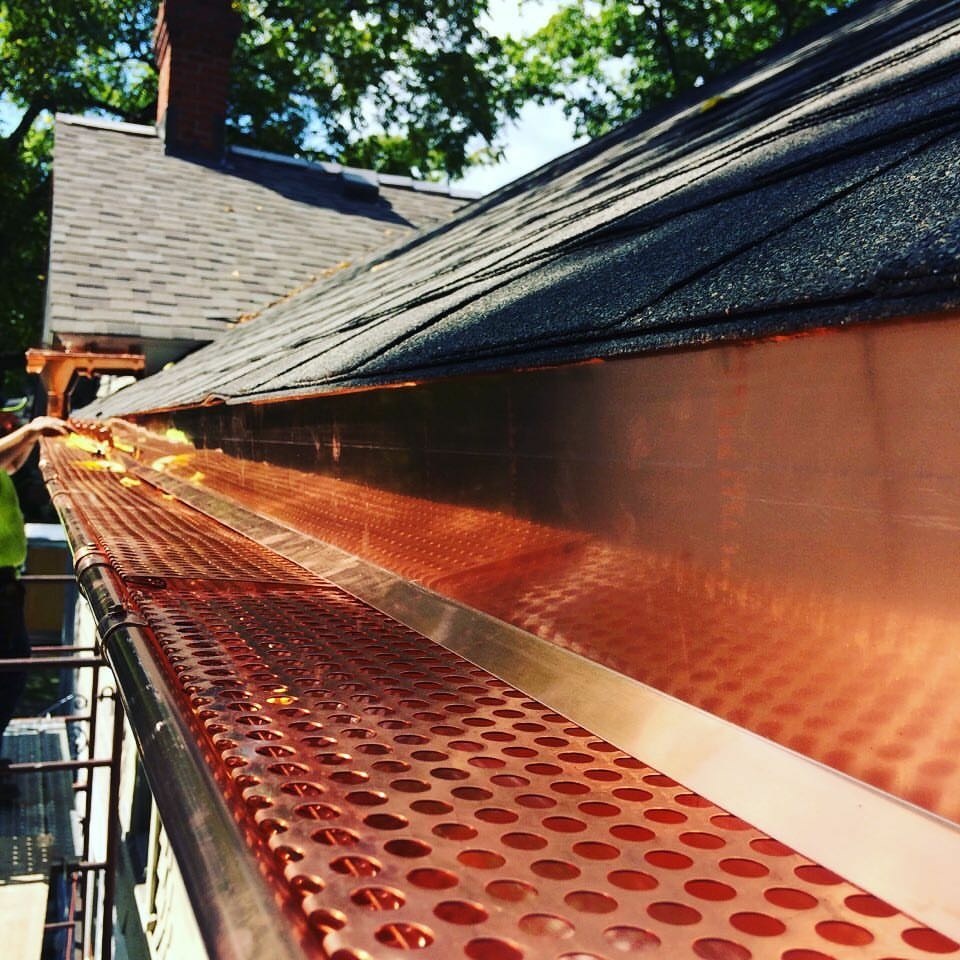
Factors to Consider When Choosing Gutter Guards
Choosing the right gutter guard depends on several factors. Evaluate the material, size, and ease of installation.
Material
Aluminum, which is lightweight and corrosion-resistant, is commonly used in gutter guards. Its longevity makes it a top choice for homeowners. Stainless steel offers durability and resists rusting, too.
Copper guards resist mold and mildew while providing robust protection against clogging. Plastic or soft metal options are cheaper but less durable than sturdier materials like aluminum or steel.
Size and Fit
The size and fit of gutter guards are crucial for proper installation. Gutter guards come in standard lengths ranging from 3 to 8 feet. They most often have widths of 4, 5, and 6 inches, with the most common being 5 inches. Some gutter guards can cost more than $5 per linear foot.
Finding the right fit ensures your gutter guard functions well without damaging shingles or other roof parts. Professional installation is recommended for roofs higher than one story to provide flawless work.
Visibility
Micro-mesh gutter guards have tiny holes, barely visible from the ground. This is great for home aesthetics. In contrast, reverse-curve gutter guards are easily seen from below and might not blend well with some house designs.
Homeowners looking for a subtle option prefer micro-mesh or foam gutter guards. These options typically do not affect how the house looks from the street. Choosing a less visible guard ensures protection without compromising appearance.
Installation: Professional vs. DIY
There are two ways to install gutter guards: Professionally or DIY. The right choice depends on your specific needs and circumstances.
| Aspect | Professional Installation | DIY Installation |
|---|---|---|
| Expertise | Provides specialized skills and knowledge. | Relies on personal skills and instructional guides. |
| Efficiency | Ensures quick and precise installation. | It may take more time and effort. |
| Height Considerations | Recommended for installations higher than 1 story. | Suitable for 1-story homes only. |
| Safety | Reduces risk with professional safety measures. | Requires adherence to safety precautions. |
| Pre-existing Issues | Can address gutter and roof issues before installation. | May overlook existing problems. |
| Cost | Higher due to labor costs. | More budget-friendly, saving on labor. |
| Quality Guarantee | Often comes with a warranty and quality assurance. | There is no professional warranty; it depends on personal installation quality. |
Professional installation provides expertise, efficient service, and safety, especially for multi-story homes. DIY installation is cost-effective and suitable for one-story houses with appropriate tools and safety measures.
Benefits of Installing Gutter Guards
Gutter guards keep leaves and debris out of your gutters.
Reduced Maintenance
Gutter guards reduce the need for frequent cleaning by blocking debris. Homeowners can save time and avoid climbing ladders often. Gutter guards should be cleaned every two years, not weekly or monthly.
Installing gutter screens keeps out pests and leaves, reducing roof maintenance work. By preventing clogs, homeowners face fewer costly repairs.
Improved Gutter Functionality
Gutter guards help keep water flowing smoothly through the gutter system. This steady flow prevents damage to a home’s foundation, facade, and landscaping. Gutter guards stop debris from entering gutters, allowing rainwater to pass through without clogging.
Having these guards also reduces maintenance needs. They block leaves, pine needles, and other waste that can cause blockages. Homeowners then spend less time cleaning gutters and more time enjoying their homes.
Prevention of Clogs and Blockages
Gutter guards prevent clogs and blockages by keeping debris out. Leaves, twigs, and other materials can clog gutters without a guard. This blockage leads to water overflow. Water damage to the foundation or basement can occur if not prevented.
Installing gutter guards significantly reduces maintenance needs. Homeowners will only need to clean gutters occasionally. Less buildup means better water flow during rainstorms. It also lowers the risk of accidents from frequent ladder use.
Top Gutter Guard Recommendations
Many homeowners look for strong gutter guards that last. Some prefer easy-to-set-up options that will help the wallet.
Best for Durability
Raptor Stainless Steel Micro-Mesh Gutter Guard stands out for its strength. Made from stainless steel, it resists corrosion and rust. This durable design ensures long-lasting protection.
FlexxPoint 5-Inch Residential Gutter Guard is also an excellent choice for heavy-duty use. Constructed with sturdy materials, this guard can handle extreme weather conditions. Both options minimize maintenance needs and enhance gutter performance reliably.
Best for Budget
FlexxPoint Residential Gutter Guard is perfect for budget-conscious users. Made from sturdy aluminum, it resists corrosion and lasts many years. The mesh design stops leaves and debris, allowing water to flow freely through the gutters.
Frost King Plastic Mesh Gutter Guard offers good performance at a low cost. It’s easy to install without professional help, making it ideal for DIYers. This option effectively removes large debris like twigs and leaves while letting rainwater pass through easily.
Best for Easy Installation
Amerimax Lock-In Metal Mesh Gutter Guard is the best choice for easy installation. It snaps into place and requires minimal tools, making it perfect for quick DIY projects. This option works well on 1-story houses and can be handled by experienced DIYers on 2-story homes.
Frost King, GutterBrush, and FlexxPoint are other top brands known for their ease of use. Brush, foam, and snap-in guards are simple to install but may not effectively block small debris.
Professional installation for high roofs over one story is recommended to ensure safety and effectiveness.
Conclusion
Choosing the right gutter guard protects your home from water damage. Look at the material, size, and visibility. Think about professional gutter installation versus DIY installation. Reduced maintenance and better gutter performance are key benefits.
For budget-friendly options, foam guards work well; micro-mesh is a wise choice for durability.
References
- ^ https://www.alvarezgutterinstallations.com/articles/understanding-gutter-guards
- ^ https://www.gutterbrush.com/blogs/news/what-are-gutter-guards-understanding-the-basics (2023-12-26)
- ^ https://structuretech.com/gutter-guards/
- ^ https://www.leaffilter.com/blog/home-exteriors/roofing-gutters/what-are-gutter-guards-why-do-i-need-them/
- ^ https://www.gutterguardsdirect.com/customer-case-studies/perforated-vs-micro-mesh-gutter-guards-which-is-better/
- ^ https://homecraftgutterprotection.com/guide-to-micro-mesh-gutter-guards/ (2023-03-12)
- ^ https://acegutterinc.com/different-types-of-gutter-guards/
- ^ https://todayshomeowner.com/gutters/gutter-guards/
- ^ https://www.architecturaldigest.com/reviews/gutters/types-of-gutter-guards
- ^ https://www.guttersupply.com/gutter-leaf-guards
- ^ https://kguardguttering.com/blog/factors-to-consider-when-searching-for-the-best-gutter-guards/ (2023-11-27)
- ^ https://www.roofsandbasements.com/everything-you-need-to-know-about-selecting-gutter-guards-for-your-home
- ^ https://www.bobvila.com/articles/best-gutter-guards/
- ^ https://www.gutterbrush.com/blogs/news/choosing-the-right-gutter-guard-5-factors-to-consider (2023-08-22)
- ^ https://wedaviesremodeling.com/best-gutter-guards/
- ^ https://mygutterguards.com.au/diy-vs-professional-gutter-guard-installation/
- ^ https://goodshepherdroofing.com/gutter-guard-benifits/ (2024-04-19)
- ^ https://comoexteriors.com/what-are-pros-cons-gutter-covers-gutter-guard-systems-mo/
- ^ https://gutterpros.com/2024/04/15/enhancing-gutter-functionality-with-guards (2024-04-15)
- ^ https://www.wecleangutters.org/gutter-installation/guards/
- ^ https://aicroofing.com/blog/pros-cons-gutter-guards/ (2024-03-19)
- ^ https://allseasongutter.com/blog/why-install-gutter-guards/
- ^ https://modern-exterior.com/which-gutter-guard-is-the-best/ (2023-06-17)
- ^ https://www.architecturaldigest.com/reviews/gutters/best-gutter-guards (2024-04-19)



